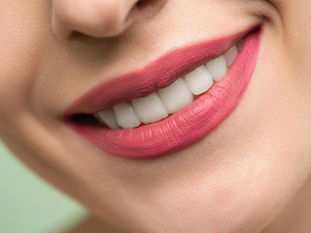BACLARAN | BF HOMES | BUENDIA | LAS PINAS |
SM CITY SUCAT | SM CENTER LAS PINAS


When to Replace Your Toothbrush: A Comprehensive Guide
Feb 12
2 min read
0
25
0

Maintaining good oral hygiene is essential for overall health, and a key component of this is using an effective toothbrush. But how often should you replace your toothbrush to ensure optimal dental care? Let's explore the factors that determine the ideal time to get a new toothbrush.
General Recommendations
For manual toothbrushes, it's generally advised to replace them every three to four months. Over time, the bristles become worn and less effective at removing plaque and debris from your teeth and gums.
Electric toothbrush heads typically require replacement every three months. The bristles on these heads are shorter and may wear out more quickly due to the high-speed movements.
Signs It's Time to Replace Your Toothbrush
Regardless of the type of toothbrush you use, certain indicators suggest it's time for a replacement:
Frayed or Worn Bristles: When bristles lose their stiffness and start to splay or fray, they can't clean effectively.
Discoloration or Buildup: Accumulation of toothpaste or debris at the base of the bristles is a sign that your toothbrush is past its prime.
After Illness: If you've been sick, especially with a contagious illness, consider replacing your toothbrush to prevent potential reinfection.
Unpleasant Odor: A persistent bad smell can indicate bacterial buildup, signaling it's time for a new brush.
Difficulty Remembering Last Replacement: If you can't recall when you last changed your toothbrush, it's probably overdue for a replacement.
Consequences of Using an Old Toothbrush
Continuing to use a worn-out toothbrush can lead to several oral health issues:
Reduced Cleaning Efficiency: Worn bristles are less effective at removing plaque, increasing the risk of cavities and gum disease.
Gum Damage: Frayed bristles can be harsh on your gums, potentially causing irritation or recession.
Bacterial Growth: Old toothbrushes can harbor bacteria, which may lead to oral infections or contribute to bad breath.
Tips for Maintaining Your Toothbrush
To extend the life and effectiveness of your toothbrush:
Rinse Thoroughly: After each use, rinse your toothbrush under tap water to remove any remaining toothpaste and debris.
Store Upright: Keep your toothbrush in an upright position and let it air dry. Avoid covering it or storing it in a closed container, as this can promote bacterial growth.
Avoid Sharing: Never share your toothbrush with others, as this can transfer bacteria and increase the risk of infections.
Conclusion
Regularly replacing your toothbrush is a simple yet crucial step in maintaining optimal oral health. By paying attention to the condition of your toothbrush and adhering to recommended replacement guidelines, you can ensure effective cleaning and reduce the risk of dental issues. Remember, a fresh toothbrush is key to a healthy smile.





